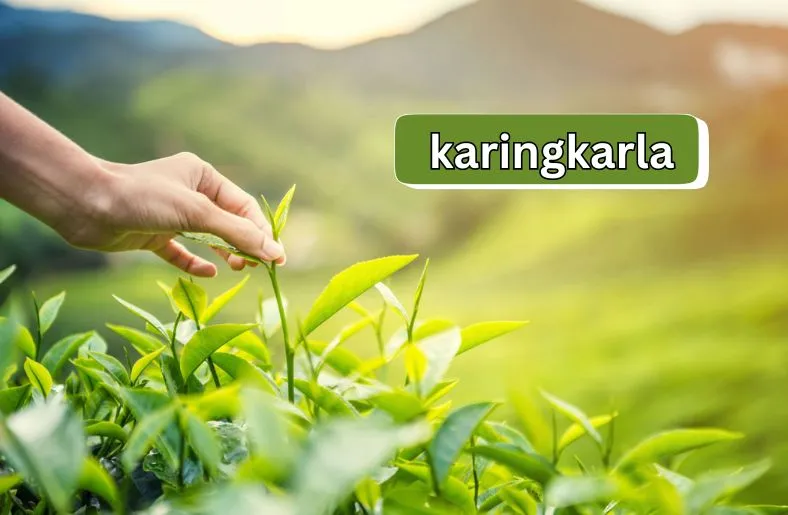Introduction
Nestled amidst lush landscapes and whispered about in ancient tales, KaringKarla emerges as a beacon of natural healing and cultural richness. This remarkable plant, cherished across generations, captivates hearts with its deep-rooted history and profound medicinal properties. Today, we embark on a journey to uncover the secrets of KaringKarla, delving into its role in traditional practices and its potential for modern wellness.
Transitioning seamlessly from ancient rituals to contemporary studies, KaringKarla offers a glimpse into a world where nature’s wisdom meets human curiosity. As we explore its botanical wonders and delve into its cultural significance, we uncover a tapestry woven with resilience and reverence. Join us as we discover how this plant, steeped in tradition, continues to inspire healing and harmony in today’s world.
The Origins and Cultural Significance of KaringKarla
KaringKarla’s story begins in ancient times, deep within lush rainforests and distant lands. Legends whisper of its discovery by indigenous peoples, who revered it for its healing powers and mystical aura. As centuries passed, KaringKarla’s reputation spread across continents, embraced by diverse cultures for its symbolic importance and medicinal benefits.
In traditional societies, KaringKarla holds a sacred place, often used in rituals and ceremonies to invoke blessings and ward off negativity. Its vibrant colors and resilient nature symbolize resilience and vitality, traits valued by communities worldwide. From Asia to Europe, KaringKarla found its way into folklore and daily life, becoming a cultural cornerstone cherished for its holistic properties.
Today, KaringKarla continues to fascinate botanists and researchers alike, with studies unveiling its rich biochemical composition and therapeutic potential. Modern science validates what ancient wisdom long understood – KaringKarla’s leaves and roots harbor bioactive compounds that support immune function and overall well-being.
As we reflect on KaringKarla’s journey through time, we marvel at its ability to bridge ancient traditions with contemporary insights. Its cultural significance transcends borders, offering a timeless lesson in the harmonious relationship between humans and nature. Join us as we unravel the mysteries of KaringKarla, a botanical marvel that continues to inspire wonder and reverence in today’s world.
Exploring the Botanical Aspects of KaringKarla
KaringKarla, a botanical wonder, thrives in diverse climates from lush rainforests to arid deserts. Its vibrant hues and intricate patterns showcase nature’s artistry at its finest. Botanists marvel at its adaptability, allowing it to flourish in varying environments worldwide.
The leaves of KaringKarla are rich in bioactive compounds, each contributing to its medicinal properties. These compounds are studied for their potential to support immune function and promote overall health. From traditional remedies to modern supplements, KaringKarla’s versatility in healthcare is widely recognized.
In botanical terms, KaringKarla is classified as a perennial shrub, known for its robust growth and resilience. Its flowers bloom in brilliant colors, attracting pollinators essential for its reproduction cycle. This symbiotic relationship underscores KaringKarla’s role in maintaining biodiversity and ecosystem balance.
Cultivated for centuries, KaringKarla is integral to many cultures’ culinary traditions. Its leaves and roots add depth and flavor to dishes, enhancing both taste and nutritional value. As a staple ingredient in regional cuisines, KaringKarla continues to inspire culinary innovation and gastronomic delights.
Exploring KaringKarla’s botanical aspects unveils a tapestry of natural wonders intertwined with human ingenuity. Its adaptive qualities and medicinal benefits make it a cornerstone of biodiversity conservation and sustainable living practices. Join us in discovering the botanical marvel that is KaringKarla, where nature’s beauty meets human fascination.
Medicinal Properties of KaringKarla
KaringKarla is renowned for its diverse medicinal benefits, cherished for centuries across cultures. Its leaves and roots contain bioactive compounds that contribute to its therapeutic properties. These compounds are believed to support immunity and aid in various health conditions.
Traditional healers have long utilized KaringKarla to treat ailments ranging from digestive disorders to respiratory issues. Its anti-inflammatory properties make it effective in soothing sore muscles and joints. Moreover, KaringKarla’s antioxidants help combat free radicals, promoting overall wellness.
Studies suggest that KaringKarla may aid in managing stress and promoting mental clarity. Its adaptogenic qualities assist the body in adapting to stressors, enhancing resilience and cognitive function. As a natural remedy, KaringKarla offers a holistic approach to well-being.
In modern medicine, researchers are exploring KaringKarla’s potential in treating chronic conditions like diabetes and hypertension. Its ability to regulate blood sugar levels and support cardiovascular health underscores its role in preventive healthcare.
Harvested sustainably, KaringKarla continues to be a cornerstone of natural medicine. Its availability in various forms, from teas to supplements, ensures accessibility for those seeking its therapeutic benefits. Embracing KaringKarla in healthcare practices honors centuries-old wisdom while integrating modern scientific advancements.
Modern Applications and Scientific Research
In today’s world, KaringKarla is gaining attention for its potential applications beyond traditional medicine. Researchers are exploring its bioactive compounds for innovative treatments in modern healthcare.
Scientific studies have identified KaringKarla’s role in enhancing immune function and reducing inflammation. These findings are paving the way for new therapeutic approaches in treating chronic diseases.
Pharmaceutical companies are investing in KaringKarla research to develop natural supplements and medicinal products. This interest underscores its value as a sustainable resource for health and wellness.
Recent clinical trials have highlighted KaringKarla’s efficacy in supporting metabolic health and cardiovascular function. Its antioxidant properties play a crucial role in protecting cells from oxidative stress.
The adaptogenic qualities of KaringKarla are of particular interest in stress management and mental health. Preliminary research suggests potential benefits in improving resilience and cognitive performance.
From laboratories to health clinics, KaringKarla is proving its versatility in modern medical practices. Integrating traditional knowledge with scientific advancements offers promising prospects for future healthcare solutions.
As awareness grows, KaringKarla’s applications extend beyond traditional boundaries. Its inclusion in dietary supplements and functional foods reflects its growing popularity as a natural health enhancer.
Exploring KaringKarla’s modern applications reveals a promising intersection of nature’s wisdom and contemporary science. Embrace its potential and discover the transformative possibilities for a healthier future.
Culinary and Cultural Uses of KaringKarla
In addition to its medicinal properties, KaringKarla holds a significant place in culinary traditions worldwide. Its distinct flavor and nutritional benefits enrich various cuisines across cultures.
Cultures in Asia and South America incorporate KaringKarla into traditional dishes, adding depth and aroma. Its versatility allows it to complement both savory and sweet recipes.
In Indian cuisine, KaringKarla enhances curries with its earthy undertones and subtle spiciness. It’s also used in teas and beverages for its calming effects and unique flavor profile.
In South American countries like Peru and Brazil, KaringKarla is a staple in soups and stews, contributing to hearty meals with its nutritional richness.
The cultural significance of KaringKarla extends beyond the kitchen, playing a role in rituals and celebrations. It symbolizes prosperity, fertility, and well-being in many indigenous communities.
During festivals and ceremonies, KaringKarla is often used as a ceremonial herb or offered as a token of goodwill. Its presence underscores its sacred and symbolic importance in cultural practices.
The growing popularity of KaringKarla in global cuisine reflects its adaptability and nutritional value. Chefs and food enthusiasts alike appreciate its ability to enhance dishes with its unique flavor profile.
Environmental and Sustainability Impact
KaringKarla plays a crucial role in environmental conservation and sustainability efforts worldwide. Its adaptive nature makes it valuable in reforestation and ecosystem restoration projects.
In regions prone to soil erosion, KaringKarla’s extensive root system helps stabilize soil, preventing erosion and promoting soil health.
As a native plant in many habitats, KaringKarla supports biodiversity by providing habitats and food sources for various wildlife species.
Efforts to cultivate KaringKarla sustainably involve practices that minimize environmental impact, such as organic farming methods and agroforestry.
The plant’s ability to thrive in diverse climates and soil conditions makes it a resilient choice for sustainable agricultural practices.
By integrating KaringKarla into sustainable farming systems, farmers can improve soil fertility and reduce dependence on synthetic fertilizers.
Conservation initiatives focus on preserving wild populations of KaringKarla and promoting ethical harvesting practices.
Awareness campaigns educate communities about the importance of preserving KaringKarla’s natural habitats and biodiversity.
Through sustainable management and conservation efforts, KaringKarla contributes to a healthier environment and sustainable livelihoods.
Understanding KaringKarla’s environmental impact underscores its significance in promoting ecological balance and sustainable development.
Conclusion
In conclusion, KaringKarla stands as a testament to the enduring connection between nature and humanity. From its ancient roots steeped in cultural traditions to its modern-day applications in health and sustainability, KaringKarla continues to inspire awe and respect. Its botanical marvels and medicinal properties offer not only healing but also a profound insight into harmonious living with nature. As we embrace its holistic benefits and explore its diverse uses in cuisine and conservation, it remains a symbol of resilience and environmental stewardship. Let us preserve its legacy and continue to uncover its potential for a healthier, more sustainable future.





